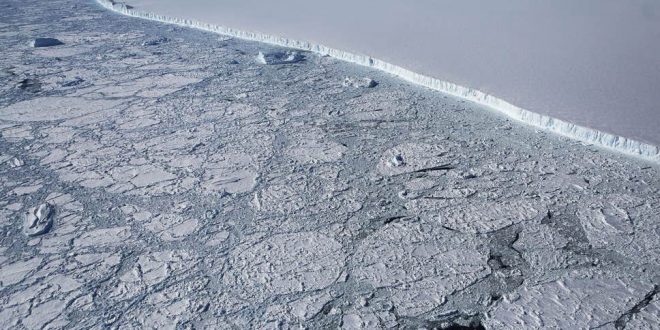Seawater could be turned to ice and pumped on glacier generating trillions of tonnes of snowfall
Vast snow cannons could be used to repair the West Antarctic ice sheet and prevent catastrophic sea level rise, leading climate scientists have suggested.
Seawater could be turned into ice and then pumped onto the glacier, generating trillions of tonnes of additional snowfall, which researchers believe could – in theory – stave off the complete collapse of the West Antarctic ice sheet.
However, scientists are divided as to whether such extreme measures would even work.
“The apparent absurdity of the endeavour to let it snow in Antarctica to stop an ice instability reflects the breathtaking dimension of the sea-level problem,” said Anders Levermann, from the Potsdam Institute for Climate Impact Research (PIK) and one of the authors of the study published in the journal Science Advances.
Underwater melting of part of the Amundsen Sea Sector of West Antarctica has triggered the increased retreat of the glacier. Recent indications suggest that a handful of glaciers have started to collapse which could double previous estimates of sea level rise.
In this latest study, researchers looked at computer simulations to project the dynamic ice loss in the future around Pine Island and Thwaites Glaciers in West Antarctica.
They were able to confirm previous findings which had found even strong reduction of greenhouse gases may not prevent the collapse of the West Antarctic Ice Sheet, according to the paper published in Science Advances.
“In practice, this could be realised by an enormous redeposition of water masses – pumped out of the ocean and snowed onto the ice sheet at a rate of several hundred billion tons per year over a few decades.”
An increase in snowfall could increase the the ice surface elevation near the point at which the glaciers meet the ocean. Simulations suggest that at least 7,400 gigatons of artificial snowfall would be required in 10 years to stabilise the ice sheet. One gigaton is slightly less than one cubic kilometre of seawater.
An intervention of this scale would be incredibly disruptive. Several tens of thousands of wind turbines would be needed to provide the electric power to carry out the engineering.
Dr Feldmann said: “Putting up such a wind farm and the further infrastructure in the Amundsen Sea and the massive extraction of ocean water itself would essentially mean losing a unique natural reserve. Further, the harsh Antarctic climate makes the technical challenges difficult to anticipate and hard to handle while the potential hazardous impacts to the region are likely to be devastating.”
These substantial costs must be weighted carefully against the potential benefits of intervention. They say this “gigantic endeavour” only makes sense if the Paris Climate Agreement is kept and climate emissions are reduced rapidly.
Other scientists not involved in this study have also raised concerns about the findings. Dr Robin Smith from the University of Reading said that the amount of water needed would be enough to cover all of Britain to a depth of more than 30 metres.
“Elevating and distributing the ocean water would mean an unprecedented effort for humankind in one of the harshest environments of the planet,” he said.
“So although such a large-scale geo-engineering scheme is not utterly impossible, reducing greenhouse gas emissions as quickly as possible is clearly still the most reliable way to reduce the many harmful effects of climate change.”
Dr Jeffrey S Kargel from the Planetary Science Institute dismissed the plan as almost as far fetched as moving people to Mars to escape the troubles humans have inflicted on the planet.
He said it could give “gullible people and manipulative politicians and those with vested interests in fossil fuels a sense that we can just keep burning fossil fuels on an expanding scale; then if things get too bad climatically we can engineer our way out of trouble”.
He added: “The visionary thinking we need most of all is what we can do to take our civilisation off dependence on fossil fuels.”
The Independent
 Lebanese Ministry of Information
Lebanese Ministry of Information



